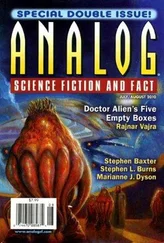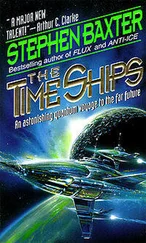The growing avatars we see in their amnio tanks are unconscious, but evidently alive. Later in the movie, whenever we see Jake come out of the link, his avatar body falls, unconscious again, yet it clearly stays alive until the next link. So even without the psionic link to its operator the avatar body maintains autonomic functions; its heart beats, its lungs take in air, its blood flows (or at least the avatar’s equivalent of these structures and functions work).
This makes sense. Your mind has some conscious control over your body, at varying levels. You can will your hand to raise, and it rises; you can will yourself to run, and you run. But there is a whole set of neural subfunctions which translate your conscious command into the detailed operations required to fulfil that command. When running you don’t have to think about which leg to lift up next, let alone individually control the various muscle groups to achieve the lifting of that leg. All this interfacing is “downloaded” into the avatar. Driver Jake has to learn to use this interface as he trains with Neytiri; he says he has to “trust my body to know what to do.”
In addition your body has a suite of infrastructure-type functions that operate beyond your conscious control entirely, and many beyond your awareness: they keep your heart beating, your blood circulating, your food being digested. There are even operations going on at the level of the individual cell; bone marrow cells keep producing new blood cells at a rate of millions a minute, every minute. None of this stops working when you forget to think about it, happily. Again all this (or its equivalent) is evidently downloaded into the avatar body.
So the avatar body in the amnio tank is a living creature, with a set of necessary functions in place and operating, long before its first link. And it undergoes some basic “training” of its own during the star flight in support of these functions. In the scene when the new avatars, just off the Valkyrie, are inspected, avatar rider Norm Spellman notes that the bodies have undergone “proprioceptive sims” (that is, simulations) during the journey. As I noted in Chapter 25proprioception, a sense of position, movement, locomotion, is surely especially important to a tree-climbing quasi-Na’vi like the avatar. And the sims, training these senses into the avatars in their tanks, have the added benefit of improving muscle tone, as Max Patel notes. The in-tank training is based on early, Earth-based experiences. Norm would have worked with his avatar when it was at the developmental stage of a child, playing games to develop motor control. (What fun that must have been!) The games are recorded and replayed to the growing avatar in its amnio tank as developmental exercises.
Perhaps the most revealing bit of dialogue in these scenes is when the techs remark that Jake’s avatar shows no “truncal ataxia.” Ataxia telangiectasia, or Louis-Bar Syndrome, is a rare inherited neurodegenerative disease that affects motor control and weakens the immune system. The first signs of the illness are often detected when the patient is a toddler. “Truncal ataxia” means difficulty with body posture and movement; the child may have difficulty learning to walk. The reference to ataxia reminds us that to the techs the force-grown avatars are indeed children, only a few years old, and they worry about their development like any anxious parent. (All this is impressive scriptwriting, by the way. The creators took care to make the science detail convincing, and to reflect it in the dialogue.)
But the avatars only exist at all because of some pretty advanced genetic engineering. In fact, as hybrids grown from a mix of human and Na’vi genetic material, the avatars may be the twenty-second century’s ultimate GMOs: genetically modified organisms.
In our century a GMO (also known as a GEO, genetically engineered organism) is an organism whose genetic material has been purposefully altered through what is known as “recombinant DNA technology,” in which DNA molecules from different sources are used to create a new set of genes. This material is then implanted into the organism to give it new or modified genes. A “transgenic” GMO takes genes from different species, while a “cisgenic” GMO takes genes only from the organism’s own species. The genes are transferred using viruses, or mechanical means like syringes—techniques used in the genetic therapy I mentioned in Chapter 19.
The first experimental GMO, produced in 1973, was an E. coli bacterium implanted with a salmonella gene. Today GMOs have wide applications, including medical research and the production of drugs. And GMO technology has become a multi-billion-dollar global industry through the use of GMOs in agriculture. Crop strains can be produced that, for example, naturally produce pesticidal proteins. By 2005 over eight million farmers throughout the world were using GMO crops. The controversy over the use of GMOs in agriculture derives partly from uncertainty about their long-term impact on humans, the food chain and indeed the biosphere as a whole, and also from their commercial nature; poorer populations may not derive the benefits of the new crops if they can’t afford the licence to use them. Certainly it is odd to think that we now share our world with life forms that are patent-protected for the benefit of companies like Monsanto of the U.S.
Transgenic animals have also been produced. In 2009 the U.S. Food and Drug Administration gave its first approval to a human-intended drug produced from such an animal: a goat, from whose milk the drug can be extracted. Other animals have been produced for the purpose of biomedical research, and to produce human hormones such as insulin. In 2009 a Japanese firm announced the first transgenic primate, a marmoset. Among the most spectacular applications of all is the Enviropig (the name is trademarked) produced by scientists at a university in Ontario, Canada in 1999, which is said to produce less phosphorus in its manure than unmodified animals.
From Enviropig to avatar! But they are both transgenic animals produced for a specific purpose.
And there’s more to an avatar than simple gene-swapping.
If it were an entirely terrestrial creation, say a mix of human with lemur traits, an avatar would still be an impressive enough application of genetic engineering—far beyond our capabilities today, but whose principles we can clearly grasp. But an avatar is more than this. Jake tells us that avatars are grown using a “mixture of human and native DNA.” A driver’s avatar is derived from his own DNA (or in Jake’s case, his identical twin brother’s). This is necessary to facilitate the synchronising of nervous systems between avatar and driver that makes the psionic link possible.
But the Na’vi are alien creatures, from another star system entirely! How can their “DNA” be “mixed” with ours? Why should they even have “DNA?”
Actually when Jake refers to “native DNA” he’s using the term more generally, to refer to “genetic material” rather than the specific molecule. (To be fair Jake is a Marine; his brother was the science guy…) The purpose of our DNA is to carry genetic information from one generation to the next, and then to use that information in the building of a new life form. “DNA” itself is a term for the specific molecule, deoxyribonucleic acid, that carries out that function for life on Earth. The Na’vi have a similar system but far from identical, based on a different biomolecular set and with a different logic to the coding. Their equivalent of DNA is called NVTranscriptase. (This is an example of how, while the Na’vi are similar to humans externally, they are quite different internally—as proven by the dissection of “specimens.”)
The “mixing” of human and Na’vi genetic material to create a hybrid avatar is done at a logical level. Information from both coding systems is extracted into a computer store, mixed using a translation table, and then downloaded into a third biochemical substrate, the genetics of the avatar.
Читать дальше










